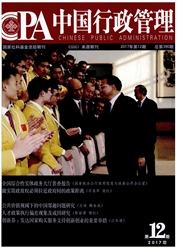

 中文摘要:
中文摘要:
本文从理论上分析了人口城镇化及空间城镇化对居民消费影响的作用机制,并运用最小二乘法和分位数回归法进行实证检验,对比分析了人口城镇化和空间城镇化对县域居民消费的影响差异。研究结果显示:人口城镇化和空间城镇化都有效促进了县域居民消费,其中人口城镇化的弹性系数随着分位点的上升而上升,而空间城镇化在低消费组和高消费组尚未起到显著的促进作用,且在其余分位点呈现出“倒u型”分布;在对两者的促进作用进行比较后发现,人口城镇化对县域居民消费的促进作用要明显大于空间城镇化。这一发现对当前我国城镇化发展模式的选择具有一定的参考价值。
 英文摘要:
英文摘要:
This paper analyses the effect mechanism of population urbanization and space urbanization on the consumption of county residents, and then does the empirical test by using OLS and QR method. The results show that both population urbanization and space urbanization have effectively promoted the residents' consumption. In particular, the elasticity coefficient of population urbanization increases with the increase of the quantile, while space urbanization has not yet played a significant role in the low consumption and high consumption group and in the rest quantile presents the "inverted U" shape. After comparing the promoting effect of the two, this paper found that the effect of population urbanization is more effective than that of space urbanization. This discovery has a certain reference value to the current development pattern of urbanization in our country.
 同期刊论文项目
同期刊论文项目
 同项目期刊论文
同项目期刊论文
 期刊信息
期刊信息
